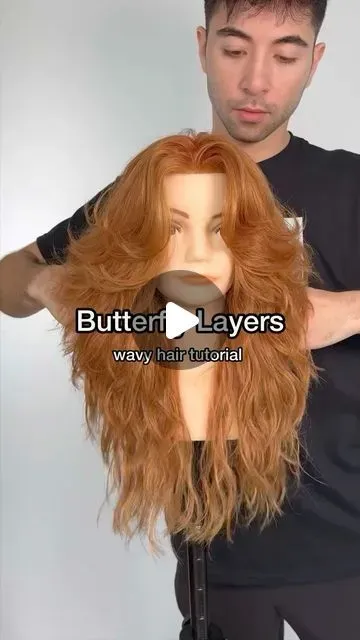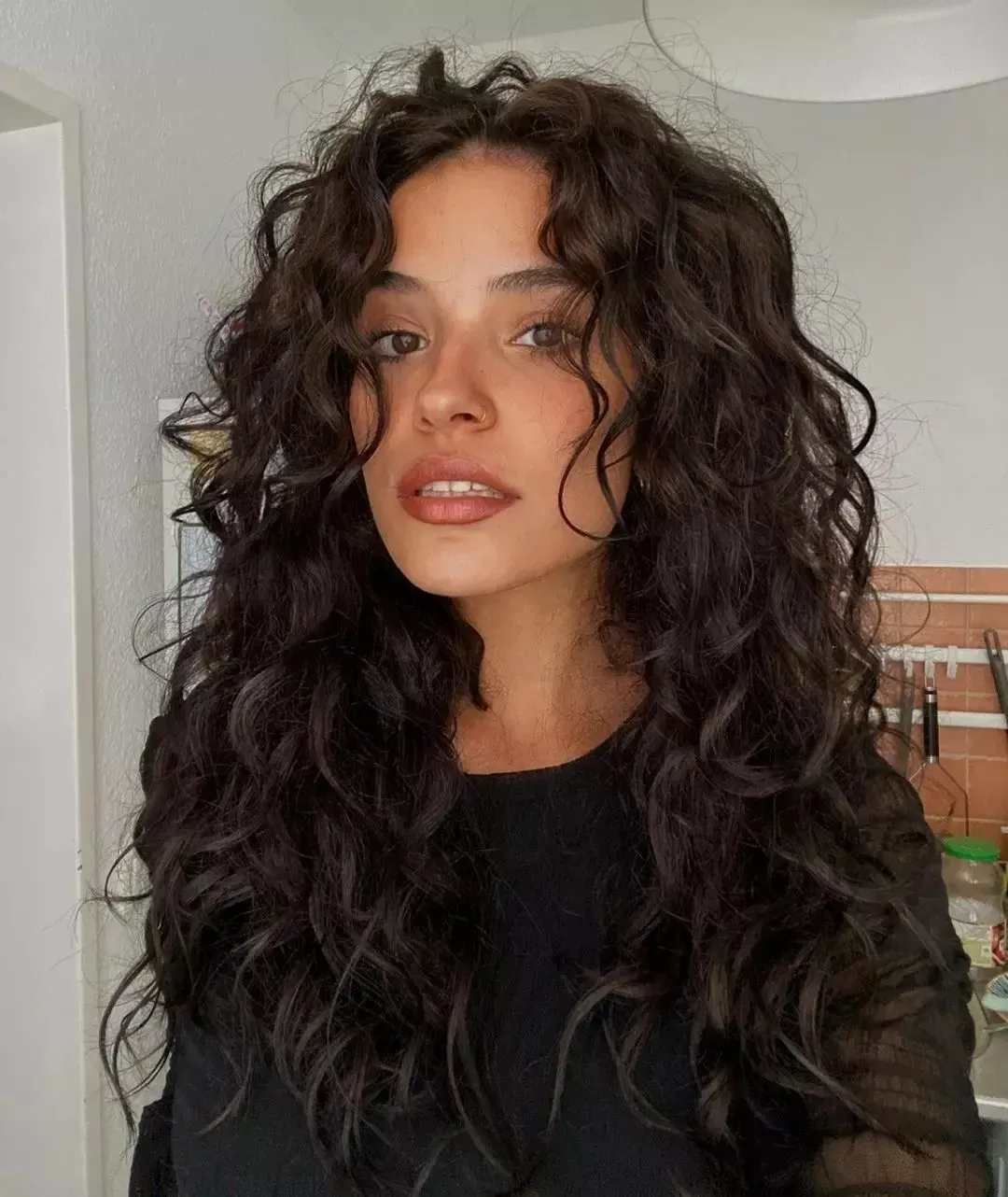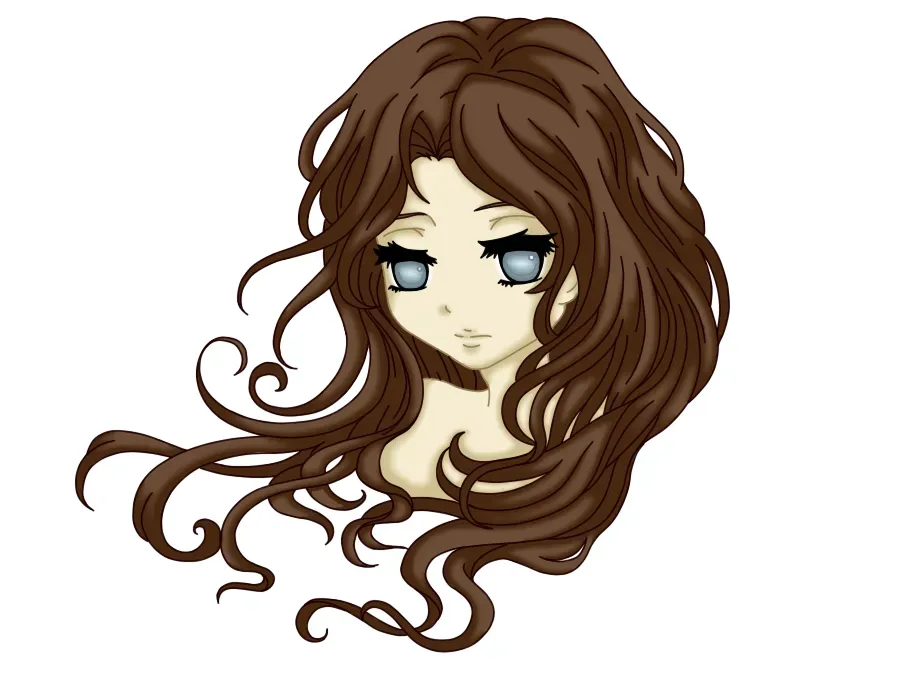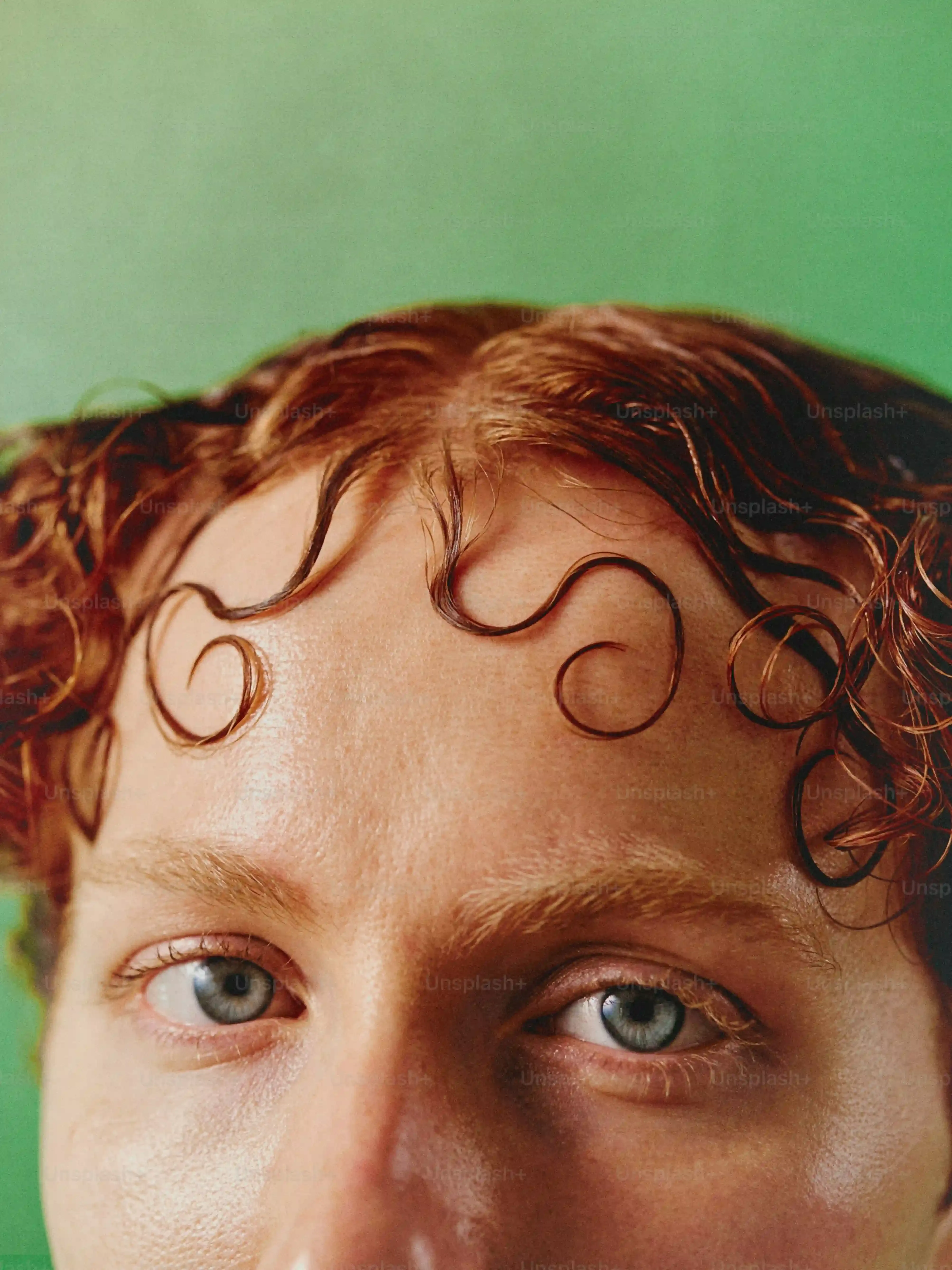Table of Contents
You've likely seen the butterfly cut everywhere lately. It's that style with the shorter, face-framing pieces and longer layers throughout, designed to give major volume and movement without sacrificing length. On straight hair, it looks effortless and breezy. But if you're blessed with texture, maybe you've scrolled past those videos and wondered, " but does the butterfly cut actually work on my butterfly cut curly wavy hair?" It’s a valid question. Cutting layers into curls or waves can sometimes go sideways, leading to triangle shapes or a loss of definition. Nobody wants that. We get it – you want the trendy look but you also want your natural texture to thrive. So, let's cut through the hype and figure out if this popular style is a friend or foe to your beautiful waves and curls. We'll dive into how the cut interacts with different curl patterns, what to tell your stylist, and how to keep those layers looking their best. Stick around, because we're about to get real about the butterfly cut and your gorgeous, textured hair.
Understanding the Butterfly Cut: More Than Just Layers

Understanding the Butterfly Cut: More Than Just Layers
It's All About the Illusion of Length and Volume
let's talk about the butterfly cut. Forget thinking it's just a few random snips here and there. This cut is strategic. The whole point is to get serious volume and movement, especially around your face, while making it look like you still have a ton of length in the back. Think of it as giving your hair a facelift without actually cutting off major inches from the bottom. It’s a layered cut, sure, but the layers are specifically placed and varied in length to create a shape that feels light and airy, like butterfly wings (hence the name, I guess). It's designed to frame your face beautifully with shorter pieces that blend into longer layers below. It's less about uniformity and more about creating a dynamic shape that moves.
Breaking Down the Key Components
So, what makes a butterfly cut a butterfly cut? It’s typically a two-part system. You've got the shorter layers, usually cut around the chin or collarbone. These are the face-framers, the pieces that give you that immediate lift and shape right where you see it. Then, you have longer layers throughout the rest of your hair. These longer layers connect the shorter pieces to the overall length, preventing a choppy look. The magic happens in how these two sets of layers are blended. A good stylist knows how to make that transition seamless, creating that flowing, layered effect that still looks full at the bottom. It’s not just slicing layers in; it's sculpting the hair to achieve a specific shape and movement.
- Strategic Shorter Layers: Primarily frame the face, hitting around the chin or collarbone.
- Longer Internal Layers: Connect the face-framing pieces to the overall length.
- Focus on Volume: Aims to create lift and body, especially at the crown and around the face.
- Maintains Length Illusion: Designed so you don't feel like you've lost significant length from the back.
- Blended Transition: Key to avoiding a disconnected, choppy look.
Does the Butterfly Cut Really Work on Curly Wavy Hair?

Does the Butterfly Cut Really Work on Curly Wavy Hair?
The Big Question: Can Curls Handle the Layers?
Alright, let’s get down to it. Does the butterfly cut actually deliver on its promises when applied to butterfly cut curly wavy hair? The short answer is: it *can*. But it’s not a guaranteed home run like it might be on straight hair. The success hinges entirely on the stylist's understanding of texture and how it behaves when cut. Layers in curly hair are a different beast. You're not just removing weight; you're influencing how the curl springs and clumps. Done correctly, a butterfly cut can enhance definition, reduce bulk in the right places, and give you that airy, face-framing lift. Done incorrectly, you end up with disconnected shelves, frizz, and a shape that just doesn't make sense. So, while the *concept* works, the *execution* is everything.
Curl Pattern and Stylist Skill: The Winning Combo
Your specific curl or wave pattern plays a huge role here. Looser waves (think 2A-2C) often adapt beautifully to the butterfly cut's structure, easily blending the shorter and longer layers. Tighter curls (3A-4C) require a much more delicate touch. Cutting these textures wet can lead to serious shrinkage surprises and uneven results. A stylist familiar with dry cutting or curl-by-curl techniques is essential. They need to see how your individual curls live and lay *before* making the cut. It's not just about following a diagram; it's about sculpting your unique texture. Without that specialized skill, you're essentially rolling the dice, and nobody wants to risk a bad haircut on a trend.
Curl Type | Potential Outcome with Butterfly Cut | Stylist Approach Needed |
|---|---|---|
Wavy (2A-2C) | Good volume, blended layers, face-framing lift | Standard layering techniques, potentially wet or dry cutting |
Curly (3A-3C) | Can enhance definition and shape, reduce bulk | Dry cutting, curl-by-curl technique recommended, careful blending |
Coily (4A-4C) | Focus on shape and weight distribution, layers might appear more distinct | Dry cutting, significant understanding of shrinkage and coil pattern |
When It Fails (and Why)
So, why does it sometimes fail? Often, it's because the stylist treats curly or wavy hair like straight hair. They might cut blunt layers or use techniques that disrupt the natural curl pattern. Too-short face-framing pieces can spring up awkwardly, looking less like soft layers and more like unintentional bangs or a weird shelf. The longer layers might not be blended properly, leaving a noticeable line between the shorter front sections and the back. It also requires specific styling afterward – air drying might not be enough to get that intended shape. You often need to encourage the layers with diffusing or specific product application. If you’re not prepared for that, or if the cut isn't tailored to your texture, the butterfly effect you were hoping for turns into something more akin to a moth-eaten mess.
Styling Your Butterfly Cut Curly Wavy Hair: Tips and Tricks

Styling Your Butterfly Cut Curly Wavy Hair: Tips and Tricks
Product Power for Definition and Hold
you've got the butterfly cut on your butterfly cut curly wavy hair. Now the real work (or fun, depending on your perspective) begins: styling. This cut absolutely relies on encouraging your texture to clump and spring to show off those layers. You can't just wash and walk away, expecting movie-star volume. The first step is getting the right products in while your hair is soaking wet. This is non-negotiable for definition. Think leave-in conditioners to add moisture, curl creams to help clumps form, and a good gel or mousse for hold. Rake or praying-hands the products through, making sure to coat every strand, especially those shorter face-framing pieces. Scrunch upwards towards your scalp to encourage the curl pattern and help those layers lift.
- Leave-in Conditioner: Hydration base.
- Curl Cream: Helps curls clump together.
- Gel or Mousse: Provides hold and frizz control.
- Application: Apply on soaking wet hair.
- Technique: Rake, praying hands, and scrunch.
Mastering the Diffuser for Volume and Shape
Air drying is great for definition sometimes, but if you want the volume the butterfly cut is designed for, you're probably going to need a diffuser. This tool is your best friend for lifting those layers and getting body without creating a frizz halo. Gently place sections of your hair into the diffuser bowl, pushing up towards the scalp. Hold it there until that section is mostly dry before moving to the next. Focus on the roots and those shorter face-framing layers first to lock in volume right where you want it. Avoid touching your hair too much while it's drying – that's a one-way ticket to frizzville. Once it's completely dry, you can 'scrunch out the crunch' if you used a gel, leaving you with soft, defined, voluminous curls and waves.
Finishing Touches and Refreshing
After drying, a few finishing touches can make all the difference. A lightweight hairspray can help hold the shape without weighing down your curls. If you need more volume at the root, try gently lifting sections and spraying underneath. For refreshing on non-wash days, a spray bottle with water and a little leave-in conditioner can reactivate your products and reshape the curls. Focus the spray on the areas that need a boost, scrunch, and maybe even do a quick diffuse if you have time. The goal is to keep those layers looking lively and the overall shape bouncy, maintaining that butterfly effect until your next wash day.
Finding the Right Stylist for Your Butterfly Cut Curly Wavy Hair

Finding the Right Stylist for Your Butterfly Cut Curly Wavy Hair
Why a Texture Specialist is Non-Negotiable
let's be real. You wouldn't go to a general practitioner for brain surgery, right? The same logic applies to getting a butterfly cut on your butterfly cut curly wavy hair. This isn't a basic trim. It requires someone who genuinely understands how curls and waves behave. They need to know about shrinkage, how layers will sit in different patterns, and how to cut dry to see the true shape. A stylist who primarily works with straight hair might follow a standard layering technique that just won't translate well to your texture. You need someone who speaks the language of curls and waves fluently. Look for stylists who showcase textured hair in their portfolios and talk about specific cutting techniques like dry cutting or curl-by-curl methods. This is where the magic happens, or where a disaster is narrowly avoided.
Hunting Down Your Curl Cutting Hero
So, how do you find this mythical creature, the texture specialist who can nail the butterfly cut on your hair? Start online. Search terms like "curly hair stylist [your city]", "dry cutting specialist", or "DevaCut certified" (even if you don't want that specific cut, it indicates training in cutting curls). Check out salon websites and social media. Look for photos of clients with similar hair types and textures to yours who have layered cuts that look good. Don't be shy about sliding into their DMs or calling the salon to ask specifically if they have stylists experienced with cutting curly and wavy hair, particularly layered styles like the butterfly cut. Word of mouth is also golden – ask friends with great curls who cuts their hair.
- Search online for "curly hair stylist near me" or "dry cutting [your city]".
- Browse salon websites and social media for photos of textured hair cuts.
- Look for stylists showcasing layered styles on curly/wavy clients.
- Ask friends or online curly hair communities for recommendations.
- Call salons and specifically ask about their experience with cutting curly/wavy hair and layering.
The Consultation: Your Vetting Process
Once you've found a potential candidate, book a consultation *before* committing to the cut. This is your chance to interview them. Bring pictures – not just of the butterfly cut on straight hair, but find examples on curly or wavy hair that you like (and maybe some you don't like). Explain your hair history, your current routine, and your styling goals. Ask them how they approach cutting curly/wavy hair. Do they cut dry? Do they consider shrinkage? How would they adapt the butterfly cut for *your* specific curl pattern and density? A good stylist will listen intently, ask questions about your lifestyle, and explain their process clearly. If they seem hesitant, dismissive, or talk over you, that's a red flag. You need someone confident and knowledgeable about butterfly cut curly wavy hair, not just someone who knows how to cut straight hair really well.
Making the Butterfly Cut Fly on Your Textured Hair
So, can the butterfly cut work for your butterfly cut curly wavy hair? The short answer is yes, but with a significant asterisk. It's not a set-it-and-forget-it style, especially with texture. You need a stylist who actually understands curls and waves – someone who won't just grab the shears and hope for the best. Get ready to talk specifics: where you want volume, how your curls clump, and what your daily styling routine looks like. It might take a little trial and error, and you'll need to commit to learning some new styling tricks to make those layers behave. But done right, the butterfly cut can absolutely enhance your natural shape, giving you that coveted volume and face-framing goodness without sacrificing all your length. Don't just blindly follow the trend; make it work for *your* hair.